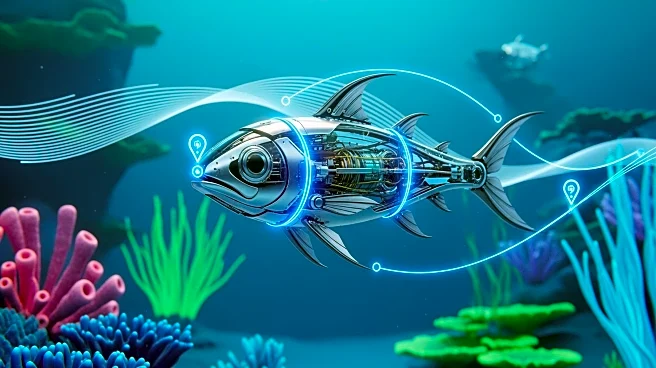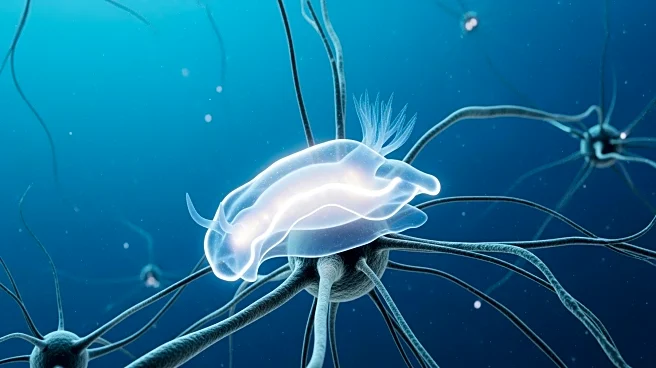What's Happening?
Researchers at EPFL and Duke University have successfully reverse-engineered the neural circuitry of zebrafish to understand how they navigate and maintain position in flowing water. By using simulations,
robots, and live fish, the team replicated the fish's neural circuits and body mechanics, providing insights into sensorimotor coordination. This study, published in Science Robotics, highlights the importance of considering environmental factors in neuroscience research.
Why It's Important?
This research advances the field of bioinspired robotics, offering new methods to study and replicate animal behavior in artificial systems. The findings could lead to the development of more efficient and adaptive robotic systems that can operate in dynamic environments. Additionally, the open-source platform created by the researchers allows for further exploration of visuomotor coordination in other species, potentially leading to broader applications in robotics and neuroscience.
Beyond the Headlines
The study underscores the significance of embodiment in understanding brain function, challenging traditional neuroscience approaches that isolate neural circuits from their natural environments. This holistic perspective could influence future research methodologies and the design of bioinspired technologies.











